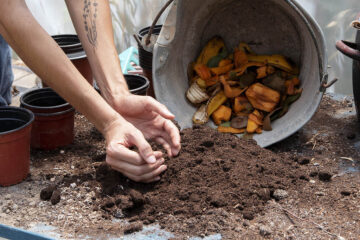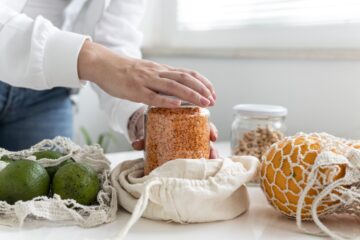You undoubtedly like spending time in your garden, like the majority of people. It’s not only a fantastic way to unwind and enjoy some fresh air, but it’s also a fantastic method to raise your house’s curb appeal.
Who doesn’t want to increase the value of their home with a well-kept garden? This article outlines six techniques to increase the output of your garden. So keep reading for some useful advice!
1. To keep your garden appearing fresh throughout the season, grow a variety of plants.
Planting a variety of plants is one of the greatest methods to keep your garden looking its best. In this manner, you will still have plants that will grow even if some of them die or don’t perform well. Additionally, a variety of plants will make your garden more interesting and beautiful. Decide on a selection of plants that will thrive in your environment and soil type by planning ahead.
Consider annuals, perennials, shrubs, and trees as viable possibilities. You may create a year-round gorgeous landscape with a combination of these plants!
The best annuals for adding color to your landscape are. They usually only have one growth season in which to blossom, yet they do so all summer long. Marigolds, petunias, and impatiens are a few common annuals.
Another excellent choice for your yard is perennials. They return year after year, only becoming better with time! Daylilies, hostas, and irises are a few of our favorite perennials.
Shrubs are ideal for giving your yard structure. They tend to be low-maintenance and might provide as a lovely background for your other plants. Boxwoods, hydrangeas, and azaleas are a few common plants.
In addition to height and attractiveness, trees may provide much-needed shade on sweltering summer days. Pine, oak, and maple trees are a few excellent tree varieties to think about planting.
As you can see, there are many different plants from which to pick if you want to design a lovely and useful garden! Just keep in mind that before you begin, you should study the plants that will thrive in your environment and soil type.
2. Include ornamental components like sculptures or garden gnomes.
Planting some ornamental items to your garden is a fantastic way to add interest in addition to adding plants. Popular options include garden statuary, birdbaths, and garden gnomes. In addition to being attractive, they may support the health of your plants by acting as habitats for helpful insects like ladybugs and Lacewings.
You can select a garden statue that suits your taste since they exist in all different sizes and forms. Additionally, they’re a fantastic way to give your yard a little flair.
Another common option for gardeners is bird baths. They not only provide birds a place to drink and bathe, but they also give your yard a touch of beauty.
Garden gnomes are a cute way to give your garden flair, and they may also deter pests. Just make sure to choose a gnome that is suitable for your region’s environment since some are designed only to be used inside.
Additionally, you may add some DIY components to your garden. For instance, you might turn an old shoe into a birdhouse or a milk jug into a birdfeeder. Use your creativity, please!
3. To enhance the soil’s quality, use organic elements like compost.
Composting is one of the greatest organic elements you can apply to your soil to improve its quality. Compost is a great source of nutrients for your plants since it is formed of decomposed plant waste. Additionally, it might enhance your soil’s drainage and aeration.
Simply gather yard trash like leaves, grass clippings, and veggie scraps to create your own compost. Manure from herbivores like horses and rabbits is another option. When you have a decent mixture of the items, place them in a yard corner and let nature do its thing!
The time it takes for your compost to be ready might range from a few weeks to a few months. Once it’s completed, you may place it in your garden beds to help your plants grow.
You may also purchase compost from a gardening supply shop if you don’t have the time or space to prepare it yourself. Get organic compost only—commercial composts often include dangerous chemicals.
4. To make watering simple, put up a sprinkler system or water timer.
Installing a sprinkler system or water timer is one of the greatest methods to guarantee that your plants get the water they need. You may set it and forget it in this manner! A water timer or sprinkler system will automatically water your plants on a schedule using a hose, respectively.
Although installing a sprinkler system might be difficult, it is ultimately worthwhile. There are several online tutorial videos and articles that may guide you if you’re unsure of where to begin.
You just need to set your sprinkler system or water timer after it has been installed, then let it do its thing! You may do this to save time and guarantee that your plants are receiving the water they need.
5. Regularly prune your plants to encourage healthy development.
Regular plant pruning is crucial to maintaining the health of your plants. By pruning, you may help a plant concentrate its energy on future development by removing dead or dying branches and leaves. Additionally, pruning promotes bushier growth, which may increase the yield of your plants.
To trim your plants, just remove any dead or decaying branches and leaves using a good set of shears. In order to promote new development, you may also cut back overgrown plants. Just be careful not to trim the plant excessively since this might harm it.
Pruning is an important element of gardening and a wonderful method to get to know your plants. Therefore, go outside and begin pruning! Your plants will appreciate it.
6. Mulch around your plants to keep moisture in and weed development at bay.
Mulching is a fantastic strategy to protect your plants from weed development and conserve moisture. Any substance that you spread on the ground around your plants to shield them from the weather is called mulch.
Mulch comes in a wide variety of forms, but some of the more well-liked choices include wood chips, straw, and leaves. Mulch is often available at your neighborhood garden center.
Spread the mulch around the base of your plants after you have it. To prevent smothering the plant, make sure there is enough space between the mulch and the stem.
Mulch will also assist control of weed growth. This is a terrific way to save time and work since nobody enjoys picking weeds.
The conclusion
Growing your own food and spending time outdoors are both benefits of gardening. But it may also be quite laborious. You may increase your garden’s productivity with these gardening ideas, which will allow you to spend less time maintaining it and more time enjoying it.
We really hope that you found these suggestions useful. Please contribute any other gardening advice you may have in the comments section below. I’m grateful.




